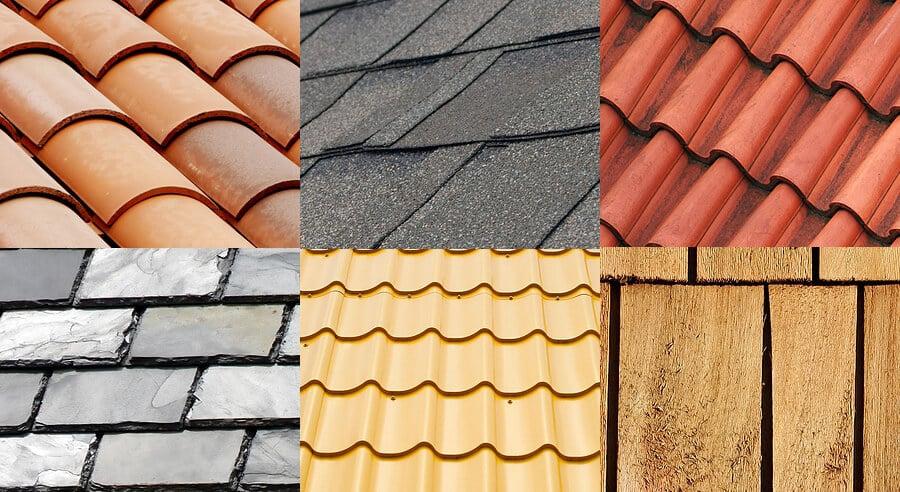When it comes to constructing or renovating a home, one of the most critical decisions homeowners face is choosing the right roofing material. The type of roof composition you select not only impacts the aesthetic appeal of your home but also plays a crucial role in protecting it from the elements. With a wide range of options available in the market, it can be overwhelming to make a choice. In this article, we will delve into the various types of roof composition, helping you make an informed decision for your roofing needs.

Understanding Roof Composition:
Before we dive into the specifics, it’s essential to understand what roof composition refers to. Roof composition, often called roofing material or roofing shingles, is the outermost layer of a roof that shields your home from weather conditions such as rain, snow, hail, wind, and sunlight. The choice of roof composition can affect not only the durability and lifespan of your roof but also its energy efficiency and overall appearance.
Asphalt Shingles: The All-Time Favorite
Asphalt shingles are the most common and widely used type of roof composition in North America. They are known for their affordability, versatility, and ease of installation. Asphalt shingles come in two main varieties: fiberglass and organic.
Pros of Asphalt Shingles:
- Affordability: Asphalt shingles are budget-friendly, making them a popular choice for homeowners on a tight budget.
- Variety: They are available in a wide range of colors and styles, allowing homeowners to customize their roofs to match their preferences.
- Ease of Installation: Contractors find asphalt shingles relatively easy to install, reducing labor costs.
- Durability: Fiberglass asphalt shingles, in particular, are known for their durability and resistance to fire and UV rays.
Cons of Asphalt Shingles:
- Lifespan: Asphalt shingles have a shorter lifespan compared to some other roofing materials, typically lasting 20-30 years.
- Environmental Impact: They are not the most environmentally friendly option due to their petroleum-based composition.
Metal Roofing: The Durable Choice
Metal roofing has gained popularity for its durability, longevity, and modern aesthetic appeal. It is available in various materials, including steel, aluminum, copper, and zinc.
Pros of Metal Roofing:
- Longevity: Metal roofs can last 40-70 years or more, outperforming many other roofing materials.
- Durability: They are highly resistant to extreme weather conditions, including heavy rain, snow, hail, and high winds.
- Energy Efficiency: Metal roofs often come with reflective coatings, which can help reduce energy costs by reflecting sunlight and keeping your home cooler.
- Low Maintenance: Metal roofs require minimal maintenance over their lifespan.
Cons of Metal Roofing:
- Cost: Metal roofing can be more expensive upfront compared to asphalt shingles, but it pays off in the long run due to its longevity.
- Noise: Some homeowners report that metal roofs can be noisy during heavy rain or hailstorms, although proper insulation can mitigate this issue.
Wood Shake and Shingle Roofing: Rustic Charm
Wood shake and shingle roofing offer a unique and rustic charm to homes. Typically made from cedar, redwood, or pine, they create a natural, timeless look.
Pros of Wood Shake and Shingle Roofing:
- Aesthetic Appeal: These roofs exude a warm and inviting appearance, adding character to your home.
- Insulation: Wood roofs provide natural insulation, which can help regulate indoor temperatures.
- Eco-Friendly: When sourced responsibly, wood roofing can be an eco-friendly choice.
Cons of Wood Shake and Shingle Roofing:
- Maintenance: Wood roofs require regular maintenance, including sealing and treating, to prevent rot, mold, and insect infestations.
- Cost: They are typically more expensive than asphalt shingles, both in terms of material and installation.
Conclusion: Making the Right Choice
Selecting the right types roof composition is a crucial decision for any homeowner. Each type of roofing material has its unique advantages and disadvantages, and the choice ultimately depends on your budget, style preferences, climate, and long-term goals for your home. Whether you opt for the affordability of asphalt shingles, the durability of metal roofing, or the rustic charm of wood shake and shingle roofing, a well-informed decision will ensure that your home is protected and aesthetically pleasing for years to come.
In this article, we’ve explored three common types of roof composition: asphalt shingles, metal roofing, and wood shake and shingle roofing. These options offer a range of benefits and considerations to help you make an informed decision for your roofing needs.



Leave a Reply